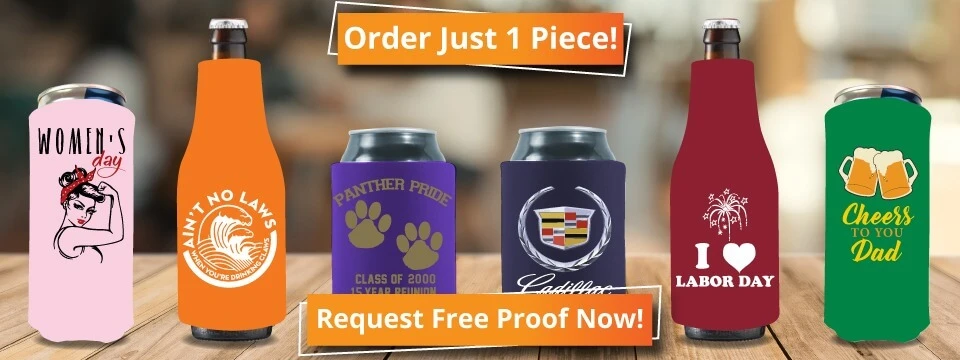No Minimum Custom KOOZIE® & Coolie - Order Today

Looking to Order 1 Custom KOOZIE® & COOLIES? No problem! At coolienation.com you can order just 1 Custom KOOZIE® & COOLIES. Yea! No Minimum KOOZIE® & COOLIES Number Needed…… Purchase Just One Custom KOOZIE® & COOLIES!!! To order 11 or less Custom KOOZIE® & COOLIES, please fill out the following Proof Request.
Order your KOOZIE® & COOLIES from coolienation.com at no minimum order and have your single Coolie sent to your house TODAY! We offer great quality, service and guarantee all our customer will be drinking with a smile! The option to order just one Coolie is their for you, that is if are not looking to share you customized Coolie with friends. Sharing is Caring and that is how we keep friends!
You can have your customize Coolie for whatever occasion even just for daily use around the house. We love personalizing KOOZIE® & COOLIES for our customers and love to make people happy, so order you KOOZIE® & COOLIES with no minimum order. KOOZIE® & COOLIES are so much fun to customize and show off. Everyone loves to bring their personalized KOOZIE® & COOLIES to a party for the world to see. If you want a John Deere Green with a tractor on it, it’s your’s. I know everyone will love your custom KOOZIE® & COOLIES and we will be by your side every step of the way!!! Sharing makes a person feel special.
[contact-form-7 id="7d9bf86" title="Product contact Form"]






